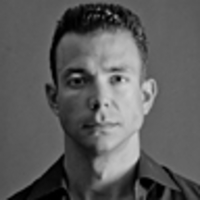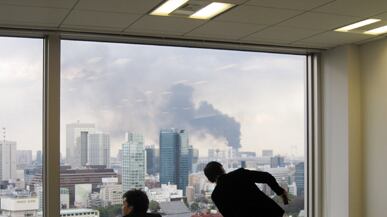When the ground began to shudder uncontrollably in the world's busiest train station, we ran for our lives. Andrew Pateras on surviving the record-breaking earthquake in Japan. Plus, see shocking photos and videos from the disaster zone.
As a photojournalist who aims to capture the beauty of our planet's cultures, I left my hotel room on Thursday morning excited to document the manic energy of Tokyo's sprawling megalopolis. There was no way I could have known that instead, I would end up taking pictures of one of the most frightening days of my life.

I had just emerged from the belly of the Tokyo Metro system, four floors beneath Shinjuku Station, the world’s busiest train station. Thousands of commuters and tourists jammed parallel train platforms and the shops in the arcade. It was around 3 p.m. I was lined up at the Bullet Train ticket counter to inquire about a trip to Nagoya, some 200 miles southwest of Tokyo, to shoot some photos there tomorrow. It was then that I felt the ground move under me slightly—it was almost imperceptible, like a subway rumbling through a tunnel far beneath my feet. I ignored it, as did everyone around me. Then, seconds later, a violent shuddering. Things started crashing to the ground, and signs hanging from the ceiling began swinging violently. I looked at an elderly man next to me. He smiled back at me and said one word: “Earthquake."
I ran for the door, about 60 feet away. The ground was shaking so violently that it was difficult to run in a straight line, like trying to sprint across the deck of a ship being tossed by swells. My heart was pounding when I reached the street and darted for a large park surrounded by skyscrapers; my mind replayed the image of the World Trade Center crashing to the ground.
The noise was unreal. You could hear the buildings creak and groan as they shook in their foundations. I wanted to get as far away from these buildings as possible, but in Tokyo, finding any truly open space is virtually impossible.
I turned to look at the building that I had just run out of; it was convulsing uncontrollably. You could still hear the ground rattling as thousands of people evacuated the buildings. I started to shoot photos of everything that was happening.
It was then that I felt the ground move under me slightly—it was almost imperceptible. Then, seconds later, a violent shuddering.
I stood in that park for a good two hours as did most everyone else. During this time, the ground continued to tremble, albeit less violently. I would find out later that afternoon that the quake was a magnitude 8.9, the strongest earthquake to hit Japan in recorded history. Some people were visibly shaken. There were a few women crying, people pointing up at the buildings as they shook, but many others appeared calm and relaxed.
Making my way back to my hotel was an epic journey. The rail system in Tokyo was completely shut down and millions were trying to make their way home on foot. The streets were gridlocked, but I didn't learn how catastrophic the event had actually been until I got to my hotel and turned on the news. The coastal areas of Japan, especially a few hundred miles to the north, were devastated beyond recognition.
As I write this, the aftershocks are still hitting hard. I am on dry land and yet I feel seasick. I have lived through many frightening days—I nearly drowned last year while whitewater rafting in Africa—but this earthquake will be forever burned in my memory as the most harrowing experience of all. I saw hundred-story buildings sway like palm trees in the wind as the earth revolted beneath my feet. Now, I think I have seen it all.
Andrew Pateras is a full-time professional photojournalist.






